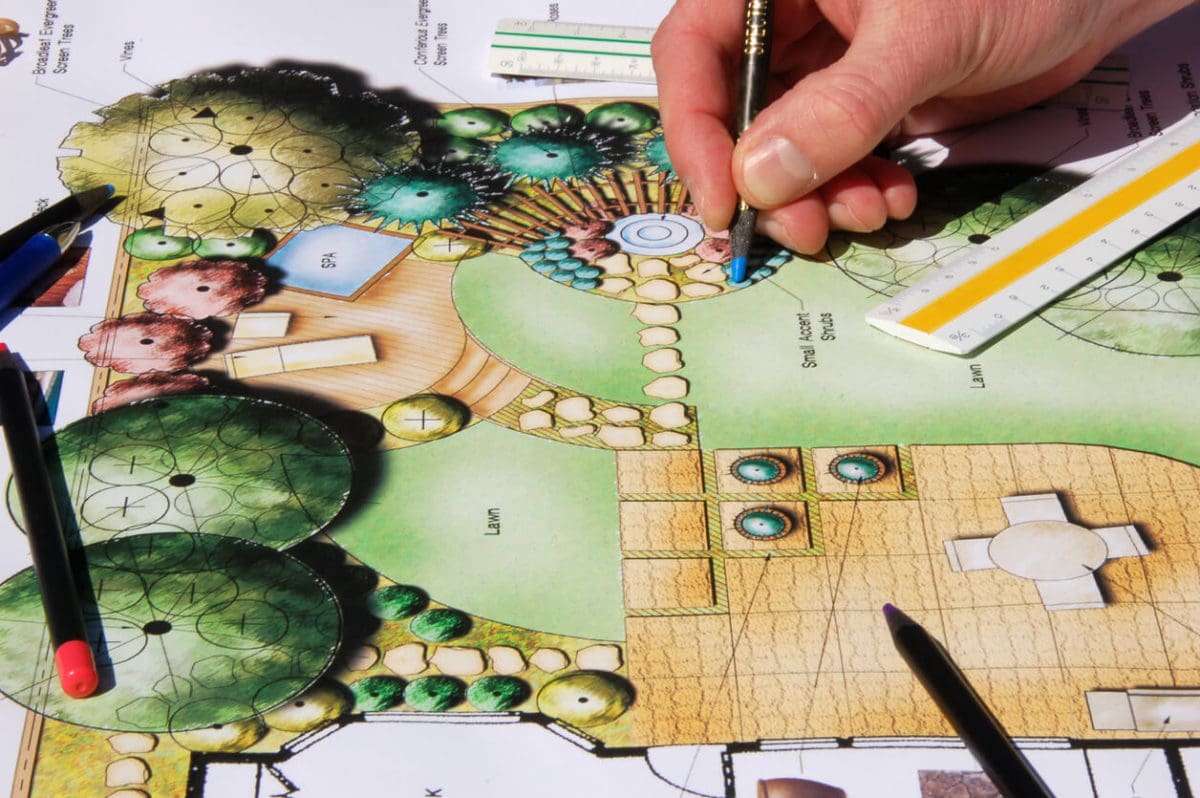Architect Interview Questions You Should Be Equipped to Answer
Architect Interview Questions You Should Be Equipped to Answer
Blog Article
Understanding the Diverse Occupation Paths Available for Aspiring Architect
As an aspiring Architect, you have a world of job paths waiting for you. Whether you're drawn to standard style or the nuances of sustainable style, there's a particular niche that aligns with your rate of interests.
Standard Style: Creating Structures and buildings
Standard style concentrates on designing buildings and frameworks that mix capability with visual appeal. As you explore this field, you'll appreciate the complex equilibrium in between kind and purpose. You'll learn to draw motivation from historical styles, integrating aspects like proportion, products, and workmanship. Your layouts can show social heritage, showcasing neighborhood practices while fulfilling modern-day demands.
You'll develop abilities in drafting, model-making, and site evaluation, permitting you to envision and interact your ideas successfully. Engaging with clients, you'll require to recognize their vision and equate it into possible designs.
Furthermore, constructing codes and sustainability techniques are crucial in your job, ensuring your frameworks are environmentally pleasant and risk-free. As you grow in your job, you'll discover possibilities in property, industrial, and even reconstruction jobs, each offering distinct obstacles. Accepting conventional architecture leads the way for a meeting occupation that admires the past while shaping the future.
Urban Preparation: Shaping Areas and Public Spaces
As a hopeful Architect, you can play a crucial role as a metropolitan planner, changing how areas communicate and operate. By employing area engagement methods, you'll guarantee that citizens have a voice fit their atmosphere. And also, integrating lasting style concepts will certainly help produce areas that not only satisfy today's demands however additionally protect the future.
Function of Urban Planners
While many may think about architects as the sole dreamers behind buildings, metropolitan organizers play an important duty fit the broader landscape of neighborhoods and public rooms. They evaluate land usage, zoning regulations, and community needs to produce lasting environments that enhance lifestyle. By teaming up with numerous stakeholders, you'll help develop parks, transportation systems, and houses that promote social interaction and availability. Urban organizers additionally concentrate on environmental considerations, guaranteeing that advancements incorporate environment-friendly rooms and assistance biodiversity. Your proficiency in spatial style and neighborhood dynamics enables you to visualize future growth while protecting cultural heritage. In this critical role, you'll straight affect just how individuals experience their environments, making every task a possibility for favorable modification.
Community Involvement Methods
Efficient community involvement methods are important for city coordinators to ensure that the voices of residents are listened to and valued in the planning procedure. To promote purposeful discussion, you should focus on open online forums and workshops where area participants can express their concepts and issues. Usage surveys and social media sites to reach a more comprehensive audience, ensuring varied point of views are included. Working together with local organizations can boost depend on and facilitate much deeper links. It's crucial to provide clear info regarding decision-making processes and proposed tasks, allowing citizens to really feel informed and equipped. By proactively including and listening comments, you'll develop spaces that show the area's requirements, ultimately causing more sustainable and successful metropolitan settings. Embrace transparency and constant discussion for lasting effect.
Sustainable Design Principles
When designing urban rooms, integrating lasting design concepts is essential for creating settings that grow both ecologically and socially. Consider integrating environment-friendly areas, like gardens and parks, to enhance biodiversity and boost air top quality.
Creating with water conservation in mind is additionally crucial-- consider rain yards and permeable surface areas to handle stormwater. Including area members throughout the planning procedure assurances that the rooms you produce fulfill their requirements and urge social interaction. By welcoming these principles, you'll add to dynamic, lasting urban landscapes that benefit everybody.

Landscape Style: Producing Sustainable Exterior Atmospheres
As you explore landscape style, you'll find vital design concepts that produce gorgeous and useful exterior areas. Sustainable methods play an essential duty in making sure these environments grow while lessening environmental effect. Plus, you'll discover a variety of occupation opportunities that enable you to make a real distinction in how individuals interact with nature.
Style Concepts in Landscape
Comprehending layout principles in landscape style is important for developing sustainable outside settings that balance with nature. You'll require to contemplate aspects like percentage, range, and equilibrium to ensure your layouts feel cohesive and welcoming. Incorporating native plants not just boosts biodiversity but likewise lowers water usage, making your landscape durable. Believe concerning the flow of space and exactly how individuals connect with it; paths and seating locations ought to invite expedition and leisure. In addition, focus on seasonal modifications, making with products that complement the surroundings year-round (Architect). By prioritizing sustainability and aesthetics, you can create outside areas that enhance helpful resources the neighborhood and advertise wellness. Welcoming these concepts will certainly establish a solid structure for your job in landscape style.
Lasting Practices Introduction
Lasting practices in landscape design not just concentrate on appearances however additionally focus on environmental wellness and resource conservation. You can create spaces that promote soil health and wellness, such as making use of natural materials and practicing permaculture concepts. Ultimately, these practices ensure your styles profit both individuals and the environment for years to come.
Profession Opportunities Exploration
With a strong foundation in lasting methods, landscape architecture offers a selection of occupation paths that permit you to make a purposeful effect on the environment. Urban coordinators frequently team up with landscape designers to create environment-friendly areas in urban setups, improving city livability. If you're enthusiastic regarding education and learning, think about becoming a landscape style educator, motivating future generations.
Sustainable Style: Concentrating On Eco-Friendly Practices
As you discover your career in design, accepting green techniques can set you apart in a competitive field. Sustainable design focuses on developing buildings that decrease environmental influence while enhancing passenger health. By integrating eco-friendly materials, energy-efficient systems, and sustainable structure strategies, you'll contribute to a greener future.
Beginning by gaining understanding of environment-friendly accreditations like LEED or BREEAM, which can strengthen your credentials. Think about just how all-natural light, ventilation, and thermal effectiveness can maximize layout. Collaborate with engineers and ecological professionals to innovate services that minimize waste and preserve sources.
Don't forget the value of area involvement-- appealing neighborhood stakeholders can inspire styles that integrate with the setting. As clients increasingly focus on sustainability, your knowledge in eco-friendly techniques will not only attract projects yet additionally satisfy your passion for accountable design. Accept this vital facet of the career, and enjoy your job prosper.
Historical Conservation: Protecting and Restoring Cultural Heritage
While you start on your building trip, think about the vital function of historic preservation in keeping our social heritage. This area concentrates on the protection and restoration of significant structures, websites, and structures that tell the stories of our past. By taking part in historic preservation, you'll assist safeguard the architectural legacy that forms community identity.
As a historical conservation Architect, you'll analyze historical relevance and analyze the problem of frameworks. You'll work closely with preservationists and chroniclers to guarantee authentic remediation methods are used. This occupation path allows you to mix creative thinking with research study, allowing you to create remedies that value original materials and workmanship.
Your job not just adds to sustainability by reusing existing buildings but additionally fosters a feeling of pride within communities. Embracing this course will certainly assist you end up being a guardian of background, protecting the tales and aesthetics that improve our lives.
Interior Design: Enhancing Indoor Spaces
Historic preservation and indoor style both share a commitment to improving the constructed atmosphere, however they concentrate on different aspects. While historic preservation emphasizes maintaining a structure's historical and social worth, indoor style absolutely nos in on enhancing indoor rooms for capability and wikipedia reference aesthetic appeals.
As a hopeful Architect, you'll discover that interior style permits you to mix imagination with technical skills. You'll make rooms that not only look great however additionally promote convenience and efficiency. This field involves understanding just how light, shade, and materials communicate within a space, impacting state of mind and usability.
You'll deal with numerous tasks, from residential homes to business offices, making certain that each setting fulfills the requirements of its occupants. By prioritizing user experience, you can transform interiors into inspiring and useful spaces, making a substantial influence on just how individuals interact with their environments. Welcome the opportunity to boost interior atmospheres and shape the way people live and function.
Industrial Layout: Combining Capability With Appearances
Industrial design plays an important function in producing products that seamlessly mix aesthetic appeals with functionality, ensuring that what you utilize day-to-day is not just visually appealing yet likewise practical. As a hopeful Architect, you could immerse yourself in this area, focusing on designing every little thing from furnishings to consumer electronic devices. Your work entails comprehending user requirements, materials, and making processes, permitting you to create cutting-edge services that boost daily experiences.
In commercial style, you'll usually work together with suppliers, marketers, and designers, ensuring that your layouts are not just attractive but likewise practical. This occupation path offers a dynamic setting where creativity meets usefulness, making it a fulfilling option for designers interested in shaping the items of tomorrow.
Regularly Asked Concerns
What Educational Accreditations Do I Need to Come To Be an Engineer?
To come to be an architect, you'll require a specialist degree in style, commonly a Bachelor's or Master's. Furthermore, you'll have to complete a teaching fellowship and pass the Architect Registration Assessment to practice lawfully.
Exist Certification Needs for Various Architectural Job Paths?
Yes, there're qualification demands for various building paths. Architect. You'll require to pass exams, total internships, and occasionally pursue specialized training, relying on your chosen emphasis, click here to read like landscape architecture, city style, or historical preservation
What Software Program Skills Are Essential for Architects Today?

How Can I Gain Practical Experience While Researching Design?
You can acquire practical experience by interning at building firms, taking part in layout competitions, volunteering for neighborhood projects, or teaming up with classmates on real-world jobs. These possibilities enhance your abilities and build beneficial connections in the sector.
What Work Opportunities Exist Outside Conventional Design Firms?
You can check out numerous job chances outside traditional style firms, like urban preparation, interior decoration, landscape style, construction administration, property development, or also duties in sustainability consulting. Each offers one-of-a-kind difficulties and incentives.
Whether you're drawn to conventional style or the subtleties of lasting style, there's a niche that aligns with your passions.When designing urban rooms, incorporating lasting style principles is crucial for developing settings that grow both ecologically and socially.As you check out landscape architecture, you'll discover necessary design principles that create lovely and practical exterior spaces.Comprehending design concepts in landscape architecture is vital for producing lasting outdoor environments that integrate with nature.In commercial style, you'll usually work together with engineers, suppliers, and online marketers, guaranteeing that your layouts are not just stunning however additionally practical.
Report this page